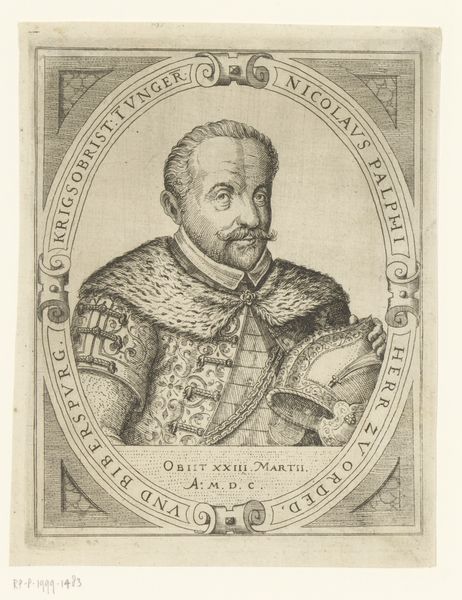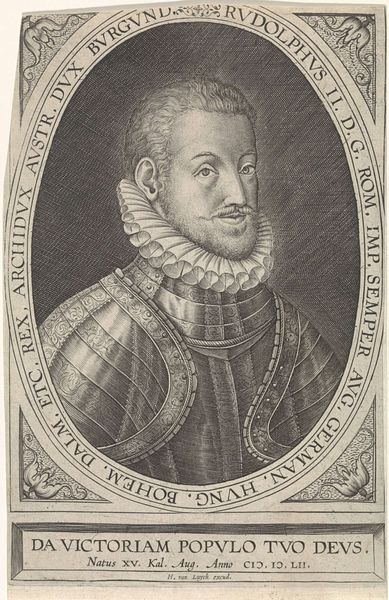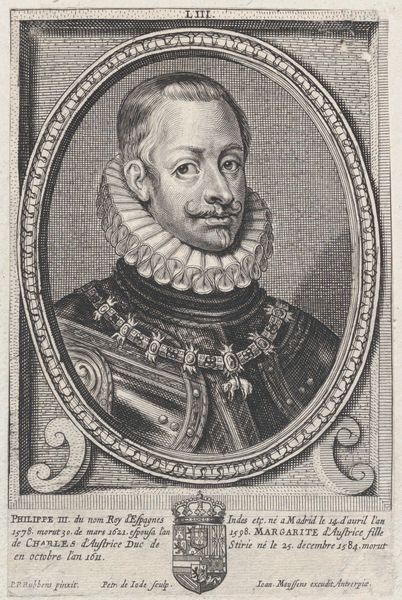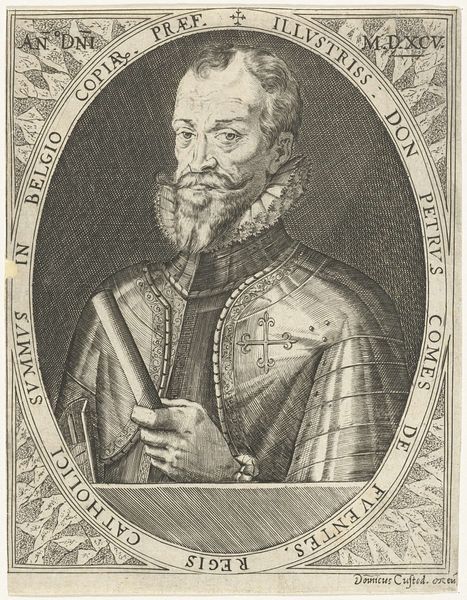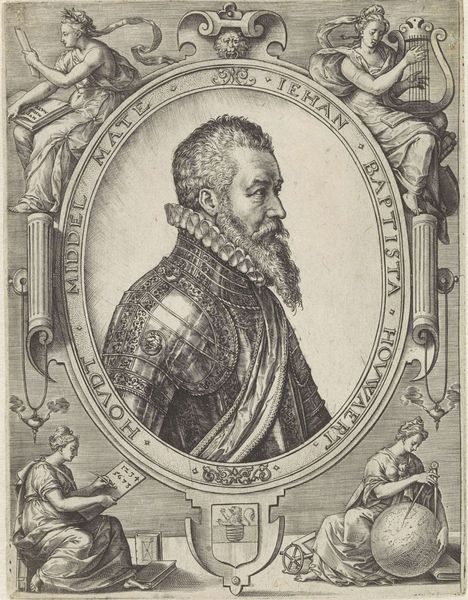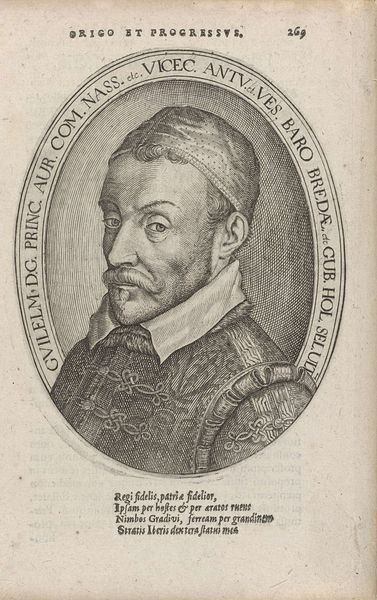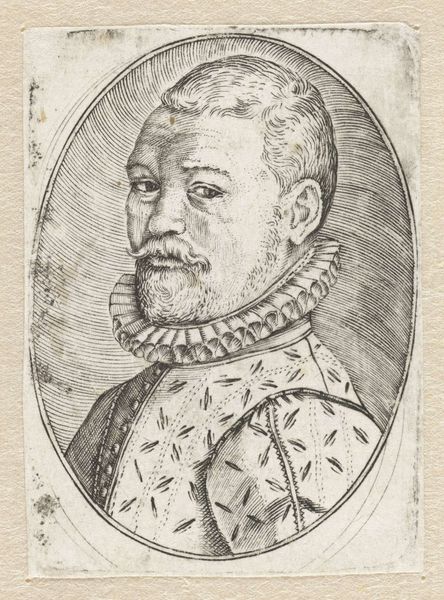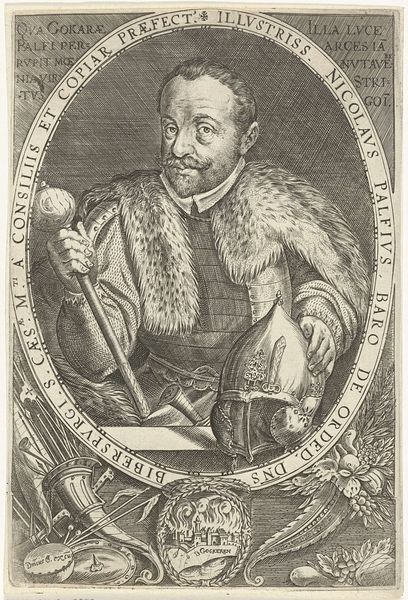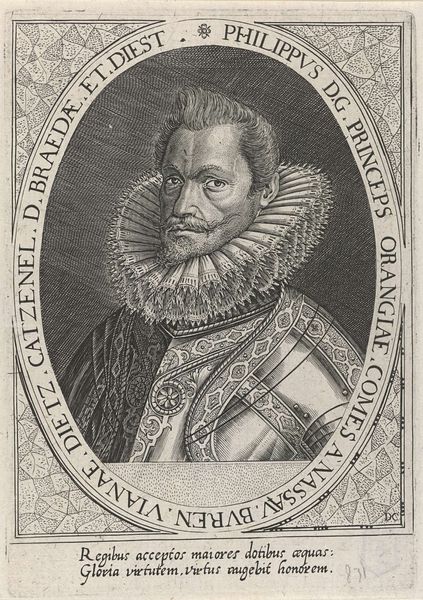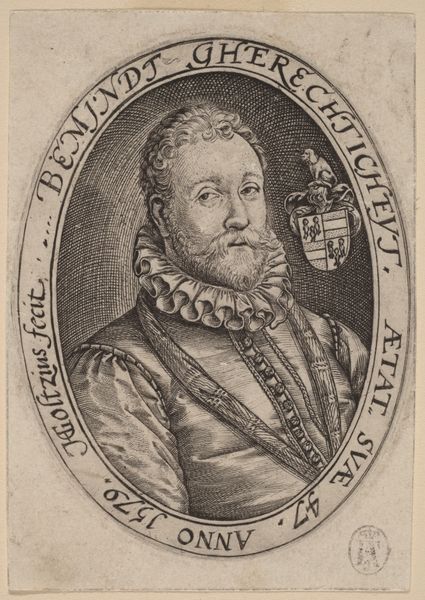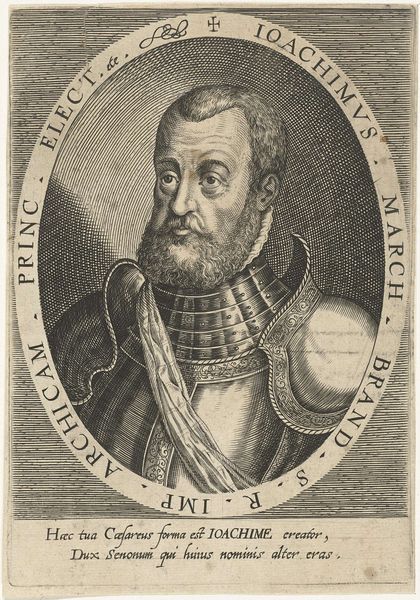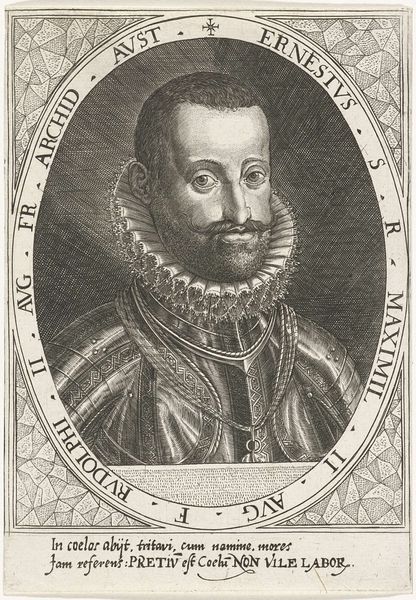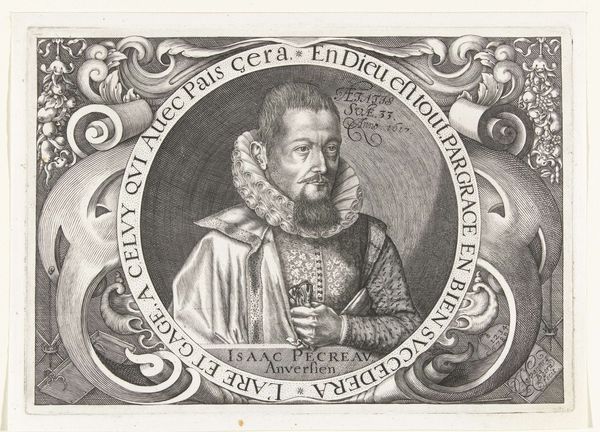
etching, engraving
#
portrait
#
baroque
#
dutch-golden-age
#
etching
#
old engraving style
#
caricature
#
personal sketchbook
#
history-painting
#
engraving
Dimensions: height 174 mm, width 115 mm
Copyright: Rijks Museum: Open Domain
Curator: Here we have a portrait of Willem I, Prince of Orange. It’s an etching, probably dating sometime between 1601 and 1652, created by an anonymous artist. Editor: My first impression is that it's austere. The stark black and white, the intense gaze—it projects a weighty sense of authority and the toll of leadership. And, technically, those intricate lines must have been time-consuming to create. Curator: Exactly. Notice the visual language used. The laurel wreath morphed into these small flowers. It evokes a classical sense of triumph and honor but made accessible to a rising mercantile society during the Dutch Golden Age. He becomes an almost god-like figure of Dutch Independence. Editor: The method really emphasizes that too. The choice of engraving, I think, underscores that accessibility you mention. Unlike a unique painting, an etching allows for reproduction and dissemination. It transforms the prince into a symbolic figure accessible to many. This democratizes the image in a way. How many could possess an oil painting, versus how many who could obtain such a print? Curator: It definitely taps into that republican ideal, which also means tapping into Dutch cultural identity. The inscription around the portrait also spells out his titles, linking him to different cities and territories. His power isn’t just abstract, it's tied to specific places and his relationship to them and their people. The Prince as material object. Editor: Yes, consider the role of the artist, too – though anonymous to us, he or she actively participated in this construction of identity by painstakingly rendering each line. This highlights that making art is an exercise that also reflects economic decisions, the allocation of time and skills. Curator: These choices are important because Willem of Orange embodies a whole era and a struggle for religious and political self-determination. Editor: The artist gives him permanence but the etching does something interesting, as well. A person who owns this work can give it renewed value in an entirely different context centuries after. We should really think about the implications of reproducibility on a ruler's authority in such a new time. Curator: Right! Well, whether intended or not at the time, both the image and the means by which it was created became powerful symbols. Editor: Symbols embedded within the work, in the materials and the craft that created it, offering so many windows to meaning!
Comments
No comments
Be the first to comment and join the conversation on the ultimate creative platform.
